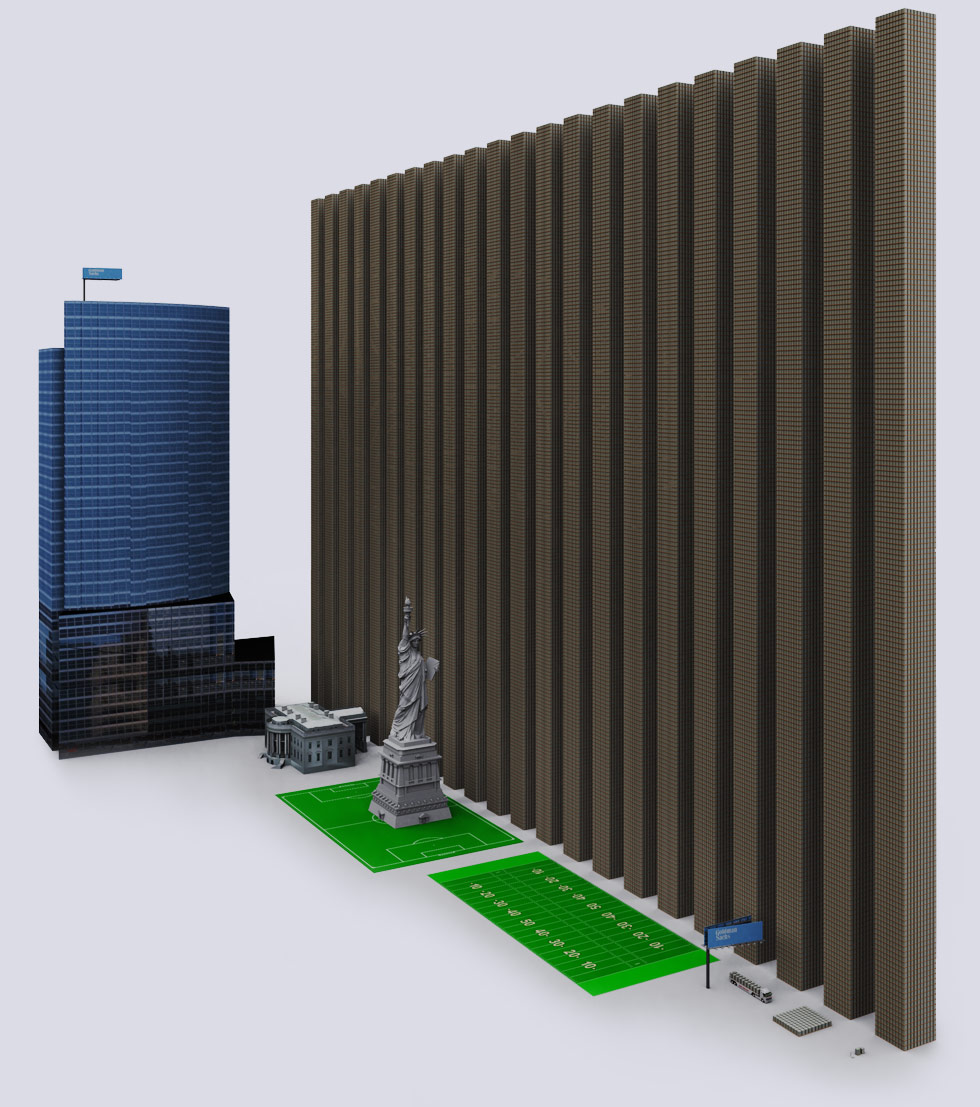This is the handout from a presentation Michael Chusid made to the 49th Annual CSI Show and Convention, April 2005 in Chicago, IL.
Selling Products Effectively to Construction Specifiers™
By Michael Chusid, RA, FCSI, CCS
It is not much of an exaggeration to say that all I know about building products I learned from sales representatives. Who else, after all, is willing to take time to explain the details of specifying a roof, glazing a window, or meeting codes for exit hardware?
Similarly, sales representatives also taught me most of what I know about building product sales and marketing. What do successful building product sales reps know about selling specified construction products, I wanted to know. What insights or habits enable these men and women to establish enduring careers, enjoy the respect of their colleagues and customers, and reap a bountiful harvest from their labors.
Despite the vicissitudes of the industry’s economic cycles (which can destroy even the best-managed businesses), daily rejection during sales calls, and the all-too-frequent frustrations of losing hard-fought bids, the reps I admire most are those who relish the opportunity to speak yet again about the merits of whatever sealant, valve, or louver they offer. They take pride not only in building their businesses, but also in their contributions toward building their communities and industries.
Here are a few of the important lessons they have taught me:
Ask and Listen: Linda taught me the value of asking questions and listening to the customer. During her first sales call on my architectural office, she got right to the point. “I’m new to the building products industry,” she said, “And frankly, I have a lot to learn about ceramic tile. I don’t want to take a lot of your time, but it would help me do my job if I could ask you two questions. What can I do in my position as a sales rep that would be most helpful to your firm? And do you have any problems or questions about tile?”
My impulse was to conclude the interview immediately because she apparently had no useful expertise to offer. However, taken aback by her candor and earnestness, I told her who to see about updating the samples in the firm’s library, and suggested she attend CSI meetings to learn about the industry.
Then I mentioned a tile problem we had on a recent project, plus an unusual requirement for a job currently on the boards. She said she did not know whether there was anything she could do about either of these problems, but would look into them.
Concluding our brief interview, I escorted her to the office door, expecting it would be our last encounter.
To my surprise, I saw her the following week at a CSI meeting. “I took your advice and joined,” she said, adding, “I asked my manager about the problems you described. May I come to your office tomorrow and show you some products that might be suitable for your projects?”
When she came to my office this time, she had several products to talk about, but also asked more questions about the firm: “What was our design philosophy?
How did we make product selection decisions? What was our attitude towards tile and other finishes?”
Every question she asked uncovered more of our firm’s needs, opening new opportunities for her. She was soon in our office on a regular basis, presenting us with possible solutions and asking still more questions. She became the sales rep my coworkers and I called first when we needed information about tile.
Unfortunately, for me at least, our relationship lasted only a year; she was promoted to national sales manager and moved out of the territory. Not a bad trajectory for a sales rep who knew little about her product line, but sure knew how to ask questions and listen to her customers.
Educate your Customer: I had relied on Bill for years to provide help specifying overhead industrial doors. He represented a leading brand, and whenever I called, Bill came to the office, looked over the plans, and recommended an appropriate model. I would insert the recommended model number into the office master specification, and move on to the next project. All I knew about overhead doors was to call Bill.
That changed about the 10th time I called Bill. “I will be glad to come over,” he instantly said, “but first, I owe you an apology.” I had no idea what he could have done requiring an apology, so he continued, “I appreciate the support you have shown by naming my product line in your specs. However, I have lost 90 percent of the bids where you have named my product ‘or equal’.”
I had not noticed this was a pattern in the office, but Bill went through a list of recent projects and I could see he was on to something. He continued, “So I am apologizing to you because I have not taken the time to help you understand the various product grades in our industry.”
Bill explained that while the ‘or equals’ satisfied the same wind load and thermal insulation requirement as the specified brand, there was a world of difference between the ‘contractor grade’ product I was getting and the ‘specification grade’ product I was expecting. “I don’t care which grade you want, since I also have a second product line at the lower price point, but I think it is time you learn the difference so you can write enforceable specs.”
Instead of meeting at my office, Bill invited me to his warehouse where there were side-by-side installations of several door grades. He pointed out differences in weatherstripping, hardware, finishes, and other details affecting quality and price. Then we discussed the specification language I could use to pinpoint the level of quality a particular job required. He even suggested the names and models of several competing products comparable to his, explaining, “I don’t mind losing a bid now and then as long as I am playing on a level field.”
By taking time to educate his customer, Bill not only leveled the bidding turf, he also established a competitive advantage as a building product sales rep. Now that I understood more about what he had to offer, I had even more reasons to call Bill for all my overhead doors requirements.
The Blind Men and the Water Cooler: Electric water coolers – could there possibly be anything interesting to learn about them? I was sure it was going to be just an ordinary in-office, boxed-lunch sales presentation: a slice of greasy pizza (if we were lucky) and maybe a quick nap. This is what often happens when a sales rep loads an audience with carbohydrates, dims the lights for a slide show, and then drones on for 30 minutes about the minutia of his product.
Richard surprised me. He did not launch into a canned speech when he saw most of us around the big conference table had finished eating. Instead, he pulled an easel with a large, blank pad of paper to the front of the room. Then he put a box of ceramic mugs,each imprinted with the name of his firm, onto the table. After pausing to get our attention, he said, “I will give one of these mugs to anyone in the room who will tell me about any problem they have had with water coolers.” Then he waited.
After an awkward moment of silence, the fellow who did our field observations, never one to turn away from an argument, asked accusingly, “Why is it contractors can never get the electrical, water, and drain connections for your coolers in the right location?”
Richard replied, “Great question,” passed a mug to the fellow, and wrote on the paper pad: “Coordination of Utilities”.
Everybody in the room suddenly woke up, and you never heard such a list of gripes about drinking fountains. The interior designer complained about the colors and finishes. A project architect pointed out coolers in her school projects were always getting clogged. The specifier was concerned about new standards for lead-free solder in potable water fixtures. This one complained about price, and that one about energy consumption. He said delivery delays, and she said obstruction of exit corridors. We were like the proverbial blind men describing an elephant: each person had a different outlook on water coolers, depending on their responsibilities and previous experience.
Only after a dozen or more mugs had been distributed, and the pad of paper filled with complaints, did Richard begin speaking about water coolers. Before the lunch hour was over he had discussed how his product addressed every one of the complaints raised.
Plus, he achieved something far more important: he made water coolers a topic worthy of architectural consideration. Heretofore, the architects in the firm had abdicated responsibility for water cooler selection to their mechanical engineering consultants and coped with their architectural concerns in frustrated isolation.
Richard understood it is not enough to pitch a product to just the designer or specifier. While it is true certain individuals in a firm may have ultimate authority for product selection, any team member can be the one who brings a fresh product idea up for consideration. As a project moves from one phase of design to the next, or from preparation of construction documents into bidding or negotiating, the decisions of one team member can be overturned by someone else with a different perspective.
Successful sales reps reach out to the entire project team to influence product selection.
Driving to Succeed: I had an early morning appointment with the president of a large building product manufacturer. At 8:00 AM, a whistle blew and my client asked if he could be excused as it was time for the company’s weekly health and safety talk. Out of curiosity, I asked if I could attend as well. I expected we would head into the factory and hear about eye protection or other industrial hygiene. However, to my surprise, he brought me into a nearby conference room full of salesmen.
Bruce, one of the sales reps, laid it on the line. “You, my fellow salesmen, have the most dangerous job in the company – your job requires you to operate an automobile.” He explained that the chances of being injured or killed in a car crash during a sales call are far greater then in an accident while operating any of the machinery in the plant, and pointed out that “a punch press has multiple safety switches and hardly every moves at 75 miles per hour.”
We went around the room and each rep offered a tip on safe driving: Pull off the road before placing a cell phone call. Leave extra time in your schedule so you never have to rush to an appointment. Check tires and under the hood daily for potential hazards. Never drink alcohol before driving, even if your client is offering to buy the round. Study the map in advance so you don’t have to read it as you drive. And more.
Bruce then taught the reps a series of stretches and exercises they could do in their car to help stay in shape and relaxed. “It’s a great way to make use of your time at traffic lights,” he added.
Remembering what Bruce told me has probably saved my life many times over. It could save yours, too.
So Many Prospects, So Little Time: “There are so many prospects in your territory, how do you call on all of them?” That’s the question I asked Maggie, a sales engineer a manufacturer rep agency. She surprised me by answering, “I don’t even try to call on all of them. Instead, I select targeted accounts and focus on them.” Here is how she explains her approach:
“First, I have to understand how much time is available for outside sales calls. Most of my time is filled with dealing with the factory, handling paperwork, preparing quotes, returning telephone calls from customers, providing technical assistance, and scheduling appointments. Nevertheless, I got my sales manager to agree that I could spend an average of two days a week on the road making business development calls.
“In some parts of town, I can park my car and make eight or more sales calls in a day. But lunch meetings can take longer, and there are important firms in outlaying areas. On a good day, I can manage an average of four or five calls.
“I am selling a new concept and it takes time to introduce it, educate potential users, and identify suitable projects. So I have a lot of missionary work to do to convert designers and builders to our system. I try to see each targeted firm once a quarter until either they become true believers and start using our product or I decide to drop them from my short list.”
Running the numbers in my head, I saw that four or five calls a day, two days a week, and twelve weeks in a quarter meant that Maggie could only target 100 firms. “That’s right,” Maggie affirmed, so I have to be strategic about whom I target.” I asked her to explain how she does this.
She continued, “The next step is to understand the types of project that could take advantage of our product. For example, we aren’t interested in residential work, so that eliminates a lot of design firms and builders right away. Many of the professional and trade associations have websites that identify the specialties of their member firms, and that is a lot of help. Plus, for a fee, the construction news services have good databases of the types of work done by various firms.
“My agency and the companies we represent also have internal sources of data I can mine. For example, I look for firms that have used our products in the past but have stopped doing business with us.
“Perhaps the most important thing I do is to ask for referrals. When meet with a contractor, I always ask him or her about the designers that do the type of work we go after. In the same way, I ask design professionals to identify the contractors they like to work with. This not only gives me local and current information, it enables me to work projects from both ends so I can build consensus among both the designers and the constructors to use our product. And, that first appointment is a lot easier to get if I can say that ‘so-and-so recommended that I call you’.
“Finally, I sit down twice a year to purge the list of anyone who is no longer attractive to me and to add new names that have come to my attention.”
While Maggie’s specific plan of action may have to be adjusted to your particular circumstances, her disciplined, targeted approach is part of her success and can be emulated by anyone working a building product sales territory.
© ™ Chusid Associates, 2005





















